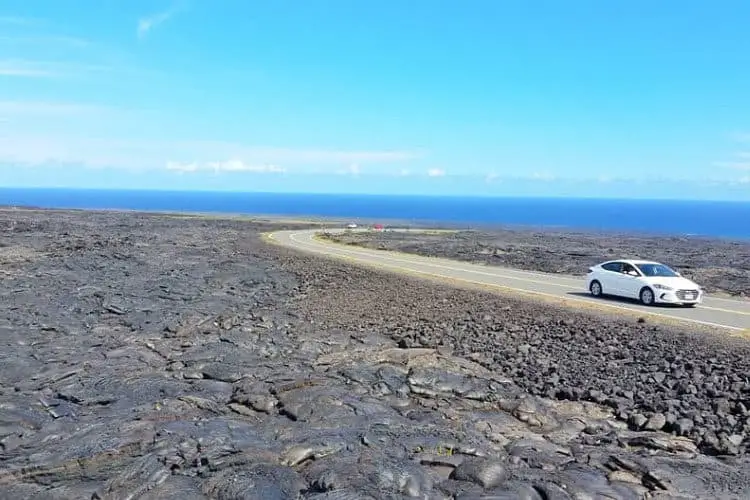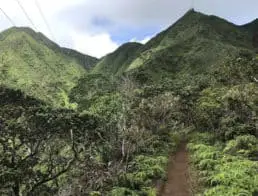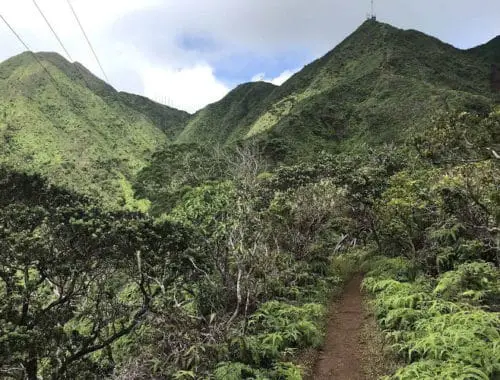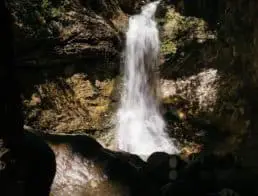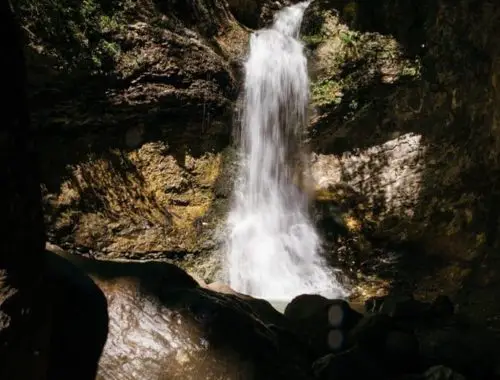In 1959, Kīlauea Iki erupted on the Hawaiian island, Hawai‘i. During the eruption, cinder fell and covered the landscape nearby. To this day, the landscape is still recovering, and wildlife is slowly returning to repopulate the area.
The Devastation Trail is an easy walking trail through the once-barren land. Visitors can admire the beauty of life returning before their eyes.
Devastation Trail Location
The Devastation Trail is located in Hawai‘i Volcanoes National Park.
Parking and Trail Entrance
The entrance to Hawai’i Volcanoes National Park is a few miles west of the town of Volcano Village. After entering, drive straight for less than 100 feet until you see Crater Rim Drive. Turn left onto this street.
Off Crater Rim Drive, you will find parking designated for Pu’u Pua’i or the Devastation Trail. You can park and begin the trail in either location.
Trail Length
1-mile round trip
Elevation
The total increase in elevation is 20 feet. Certain areas of the paved trail have a grade of over eight percent.
Devastation Trail Hours Spent Hiking
Expect to spend about an hour on the Destination Trail.
Many people frequent this path. Although it may be busy, there is plenty of space for everyone to walk at their own pace.
Route Type
There-and-back
Difficulty
The Devastation Trail is an easy hike. It is paved and accessible for strollers and wheelchairs.
Gear To Bring
As always, remember water and snacks. The trail is short, so it is unlikely that you will need to pack a lunch unless you plan to sit for a picnic.
The weather conditions in Hawaii can be unpredictable, so come prepared with sunscreen, hats, and appropriate clothing for rain.
Visitors have recommended that children not bring bikes or skateboards. The lava rocks on the sides of the trail can cause serious injury if a kid falls off of their bike and hits their head.
Best Seasons to Visit the Devastation Trail
Most of the heaviest rainstorms in Hawai‘i occur between October and April, so these months are not ideal for visiting the Devastation Trail.
In Hawaii, you will find that the only noticeable seasons are summer and winter. Summer, from May to September, can be very hot. If you decide to visit at this point to avoid the rain, dress in light clothing.
Pets
Pets are not allowed on the Devastation Trail.
Fees
There is no fee to visit the Devastation Trail.
Reviews
Most visitors to the Devastation Trail enjoy the history entwined in the path. However, some reviewers argue that there is little to see, and most of the trail is desolate.
Unfortunately, visitors are often disappointed by the short distance of this trail. They have said that the Devastation Trail is worth visiting if you have extra time, but you should not pick this trail as a high priority in the Hawai‘i Volcanoes National Park.
Nonetheless, the Destination Trail is ideal for people looking for an accessible, easy trail with a rich history.
Learn more about other popular hiking locations by visiting these articles:
- Adams Canyon Trail
- Aiea Loop Trail
- Ancient Lakes Trail
- Batteries to Bluffs Trail
- Big Falls Trail
- Bridle Trails State Park
- Calico Basin Trail
- Cochran Shoals Trail
- Craven Gap Trail
- Dale Ball Trails
- Donut Falls Trailhead
- East Palisades Trail
- Endless Wall Trail
- Judd Trail
- Holy Jim Trail
- Hummingbird Trail
- Kuilau Ridge Trail
- Kuliouou Ridge Trail
- Lake Clementine Trail
- Lost Valley Trail
- Mahana Ridge Trail
- Makiki Valley Trail
- Marymere Falls Trail
- Monkey Trail
- Munds Wagon Trail
- Murray Canyon Trail
- Peters Canyon Hiking Trail
- Pink Pillbox Hike
- Point Bonita Trail
- Poo Poo Point Trailhead
- Red Reef Trail
- River Place Nature Trail
- Tahquitz Canyon Trail
- Trail Canyon Falls
- Waterfall Hikes
- Wave Cave Trail
- Wiliwilinui Ridge Trail
